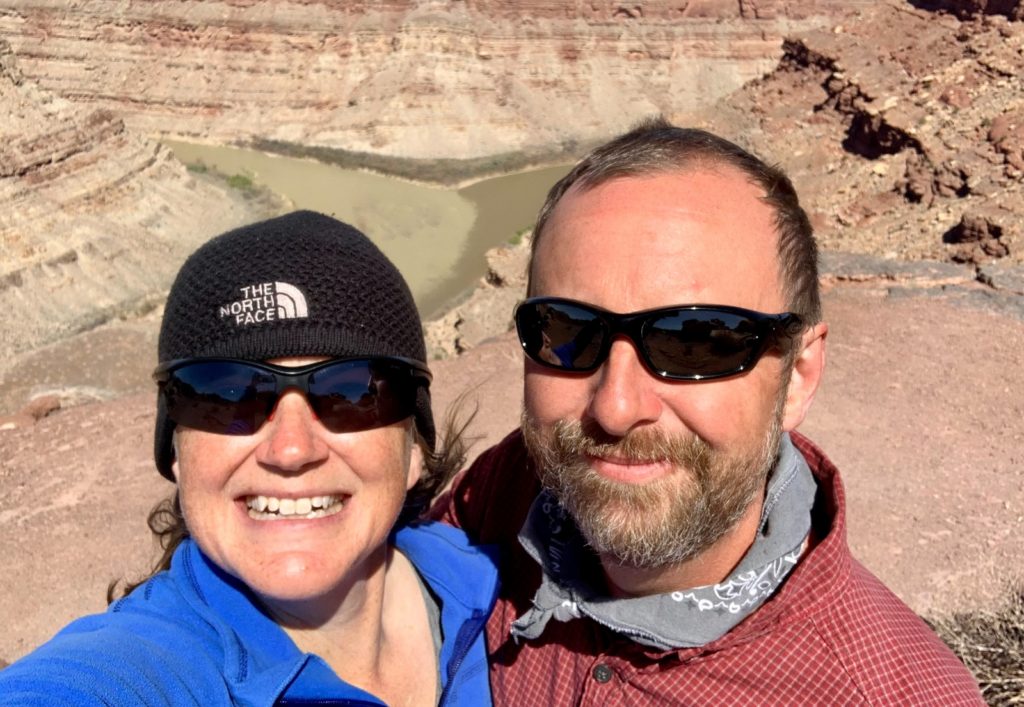
Confluence Overlook Trail
About mid way through our Canyonlands National Park Needles District visit, I stopped by the visitor center to chat with rangers about some trail conditions. I was interested in either hiking to the Confluence Overlook or out to Paul Bunyan’s Potty and Tower Ruin. I knew the route to Tower could be a sandy slog along a backcountry 4WD road and I thought this might be a good day to attempt it since the temperatures had dropped 25 degrees. I spoke with two wonderful young women who both strongly discouraged that trip under the current conditions. While it is normally a sandy slog, it was especially so after the park recently brought in heavy equipment for some work on the road (the ‘road’ is really just a dry, sandy creek bed). The equipment used had loosened the sand ever more than usual. With the cooler temperatures, the rangers said it would be the perfect day to head out to the Confluence Overlook. The lightly trafficked trail is one of their favorites, but they only recommend it to hikers on cooler days due to the rugged terrain and lack of shade. They called it “a great thigh master”!
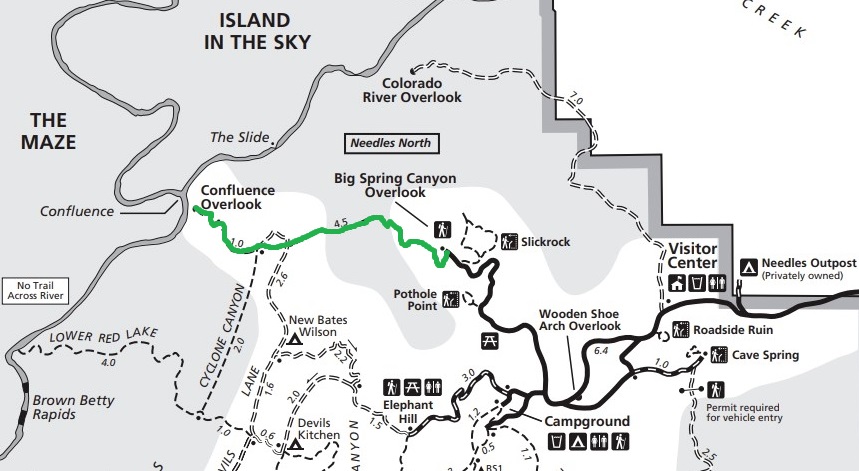
The Confluence Overlook is different from most trails in the Needles District. Instead of hiking in and around the park’s distinctive striped sandstone formations, the trail crosses a couple steep canyons and traverses through mostly open country along the northern edge of the park. After 5.5 miles, the trail ends abruptly at a 1,000 feet high cliff overlooking the confluence of the Green and Colorado rivers. Because it lacks proximity to the park’s impressive namesake formations, and because of the trail’s length and difficulty, few visitors hike this trail. That means solitude—a rare feature in 2021’s busy travel year. We only saw 8 parties during our hike.
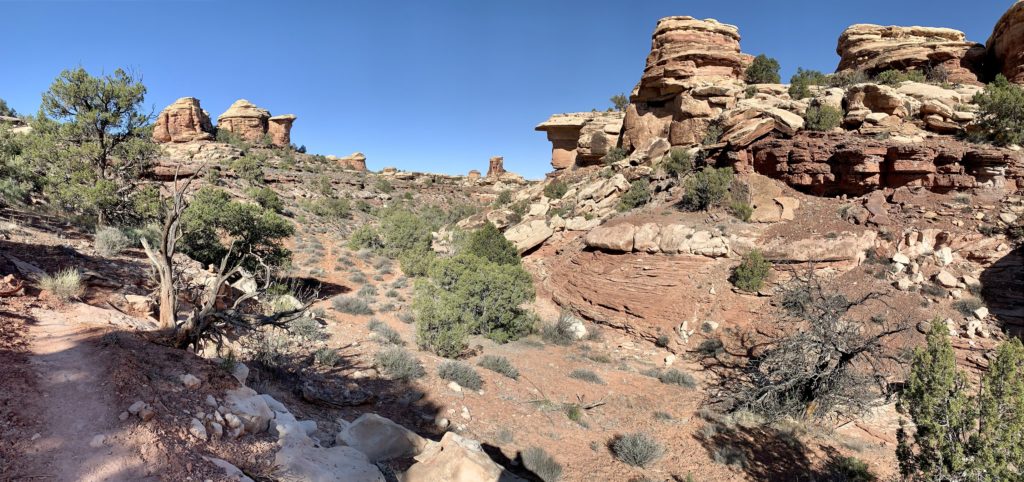
Confluence Overlook is a challenging 11.0 mile out-and-back hike. From the trailhead at Big Spring Canyon Overlook, the trail immediately beings a relatively short, but steep descent into Big Spring Canyon. That is immediately followed by an equally steep climb back out of the canyon. At times the climb required the use of hands to negotiate over boulders and there is one ladder that assists the climb up a particularly steep section. Past Big Spring, the trail moderates and hikers get a bit of a reprieve before dropping into Elephant Canyon. Of course, you have to climb right back up out of Elephant!
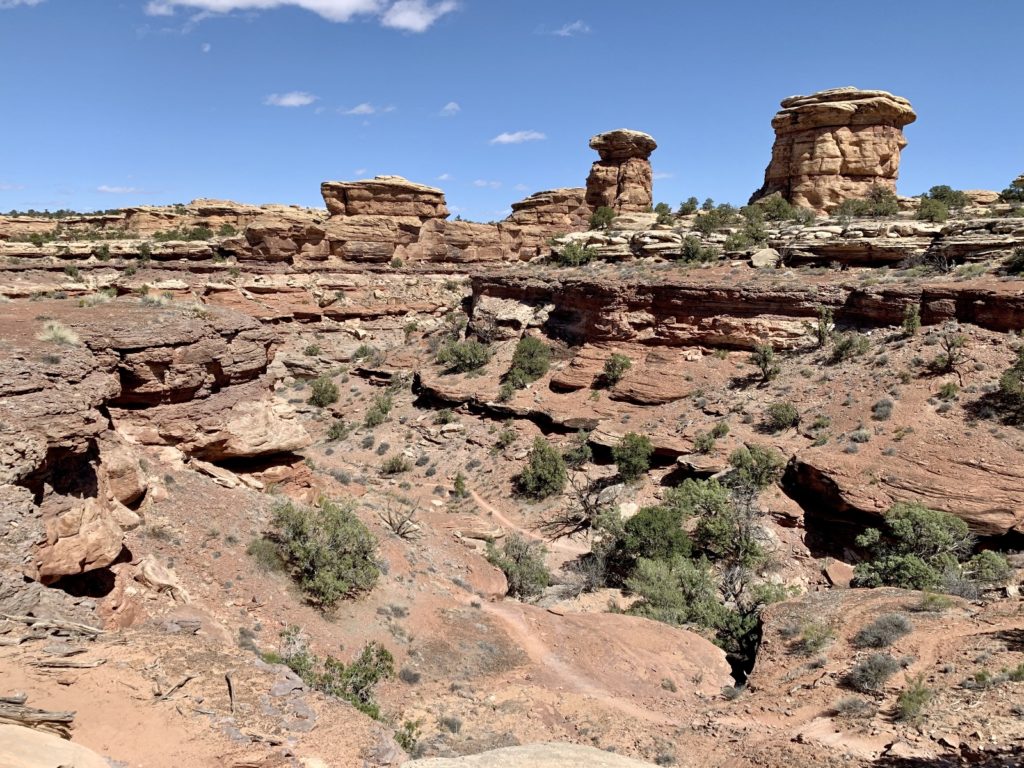
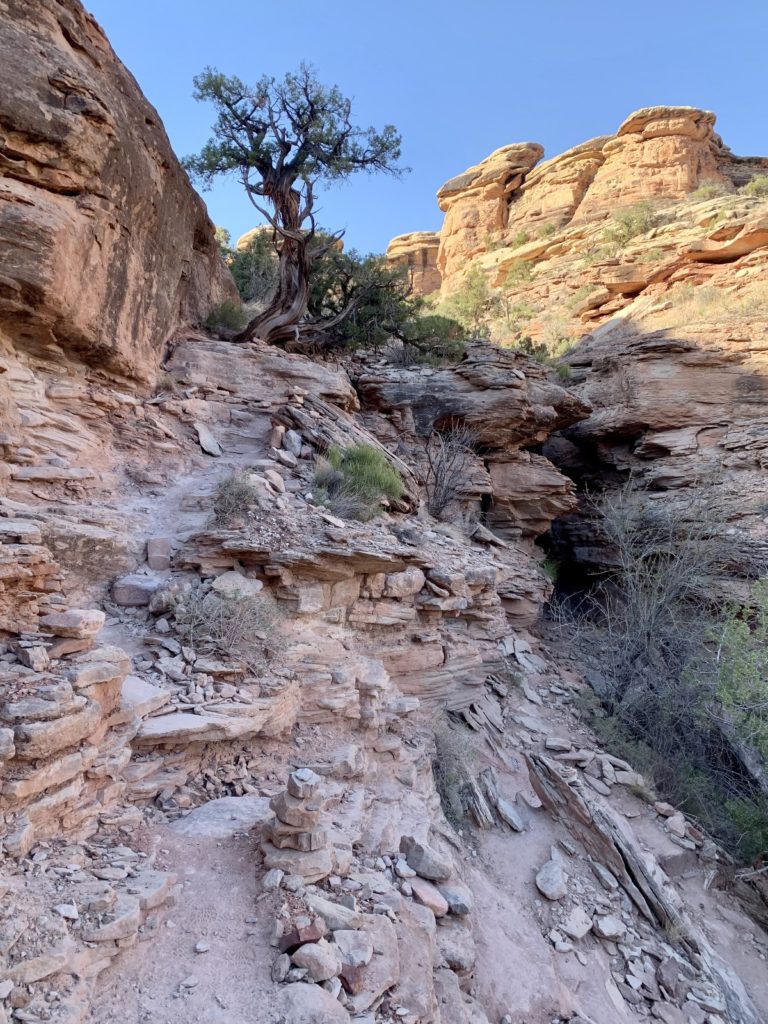
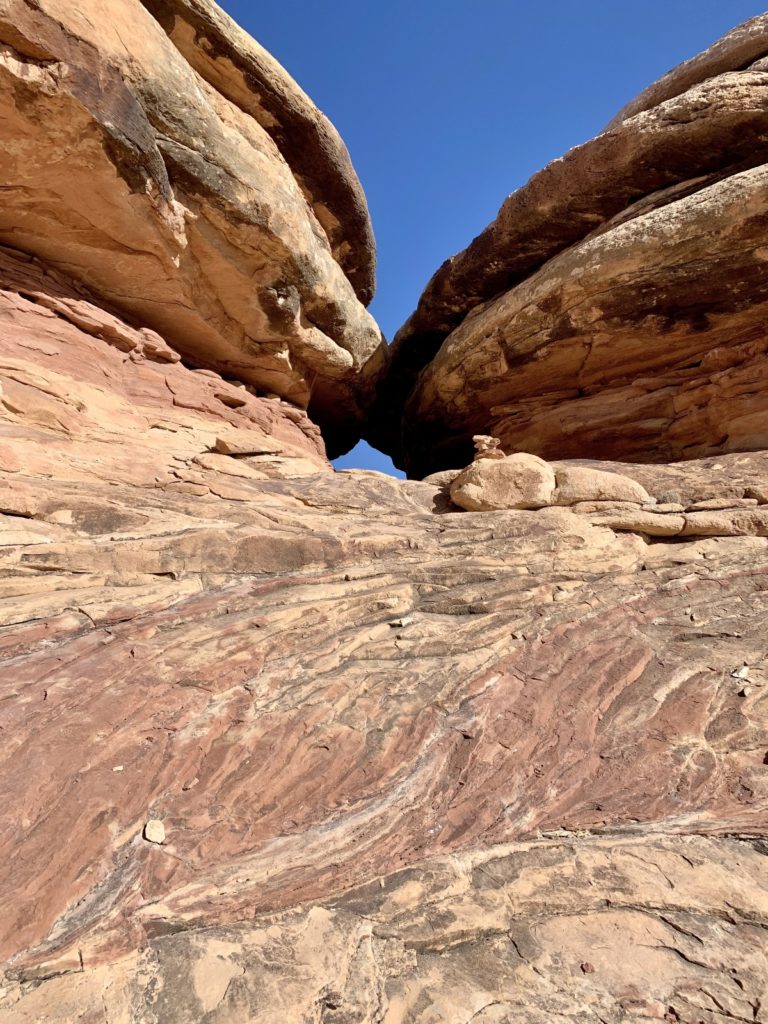
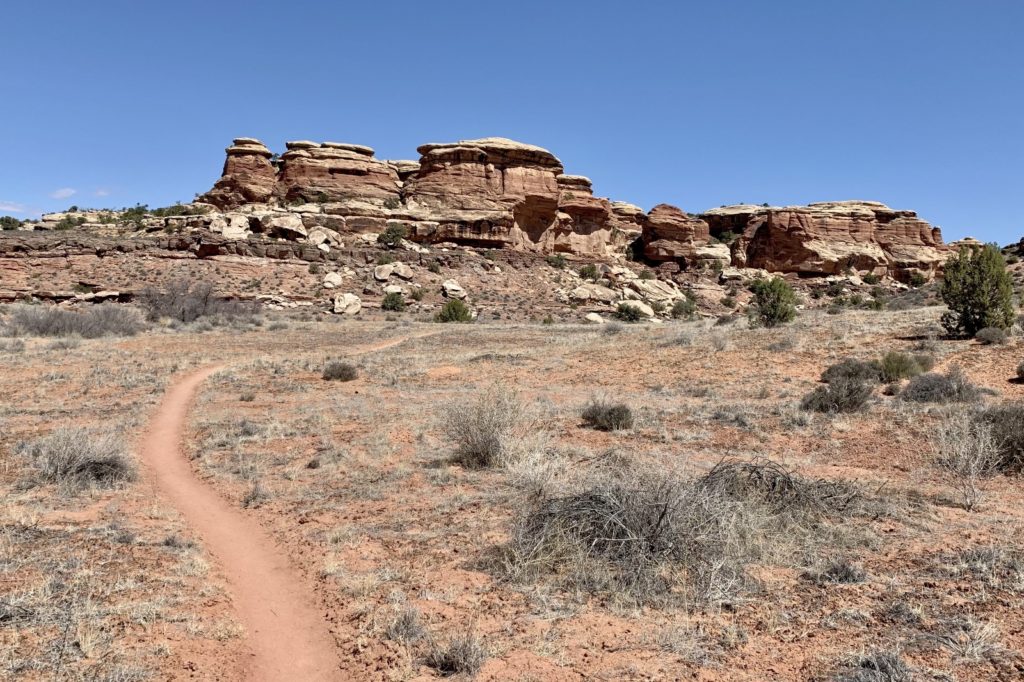
Past Elephant Canyon, there are some steep sections of trail and boulders to negotiate as well as some lovely slickrock sections. While the scenery is different from other Needles trails, it is still lovely. Near the overlook, there is a short stretch of sandy jeep road to walk. Navigation is relatively easy thanks to well-signed junctions and numerous cairns, but be sure to keep a constant eye out for the next cairn.
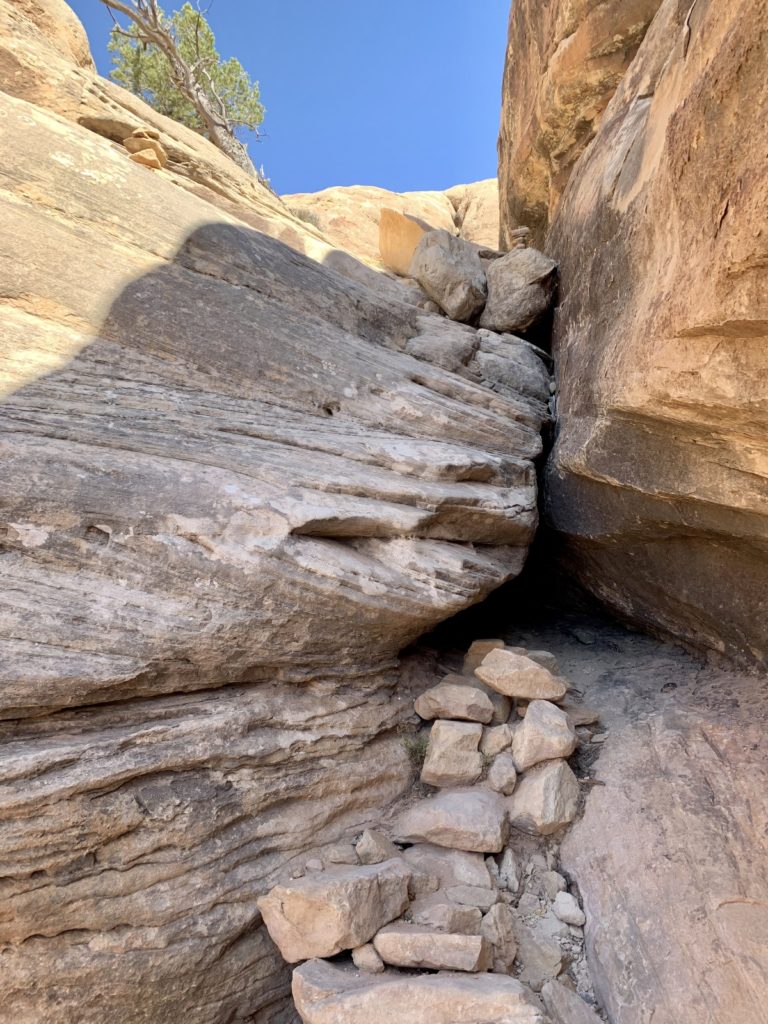
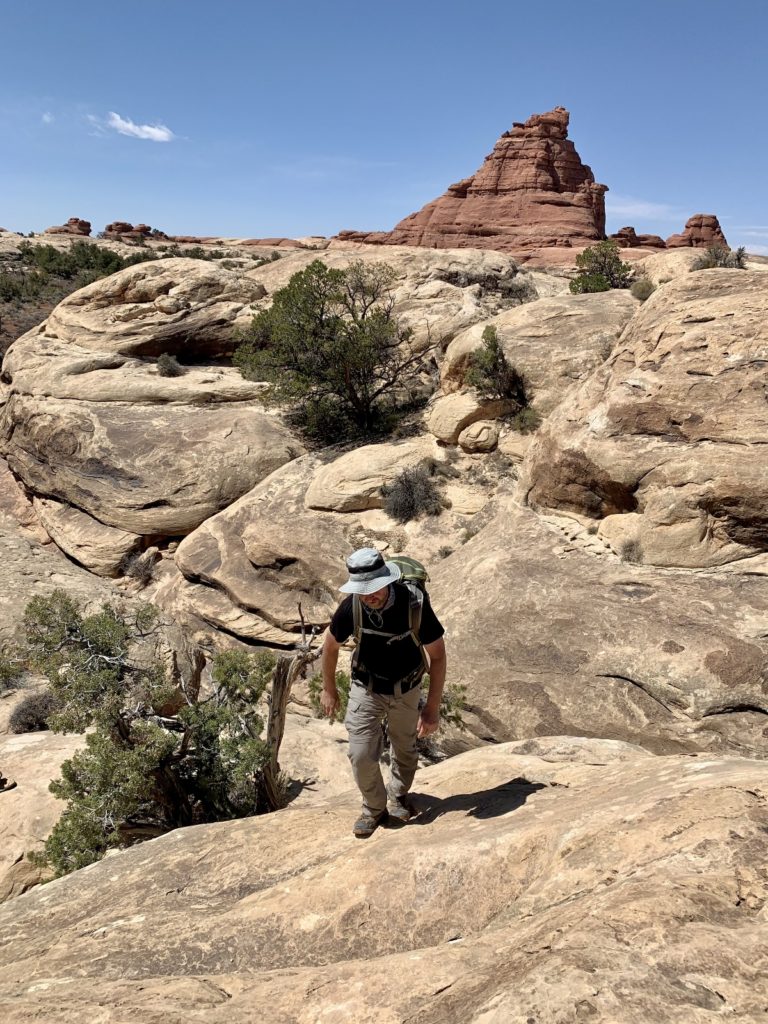
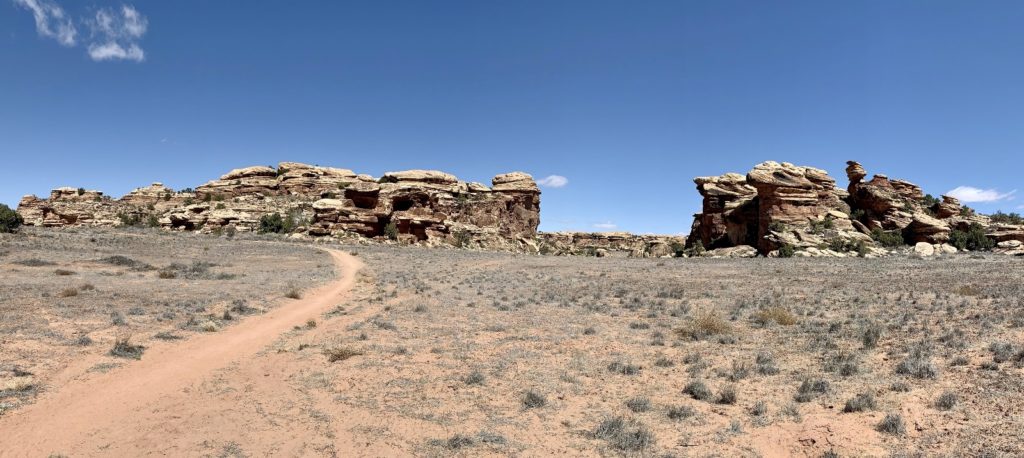
Views from the overlook were as impressive as anything you’d see in the Grand Canyon minus hundreds of fellow tourists. We stood 1,000 feet above the confluence of the Green and Colorado rivers and marveled at how different the water from each river looked. Across the canyon to the north was Island in the Sky District of Canyonlands National Park and to the west the vast expanse of the remote Maze District. It was worth the strenuous 11.0 mile hike to see this wild western confluence.
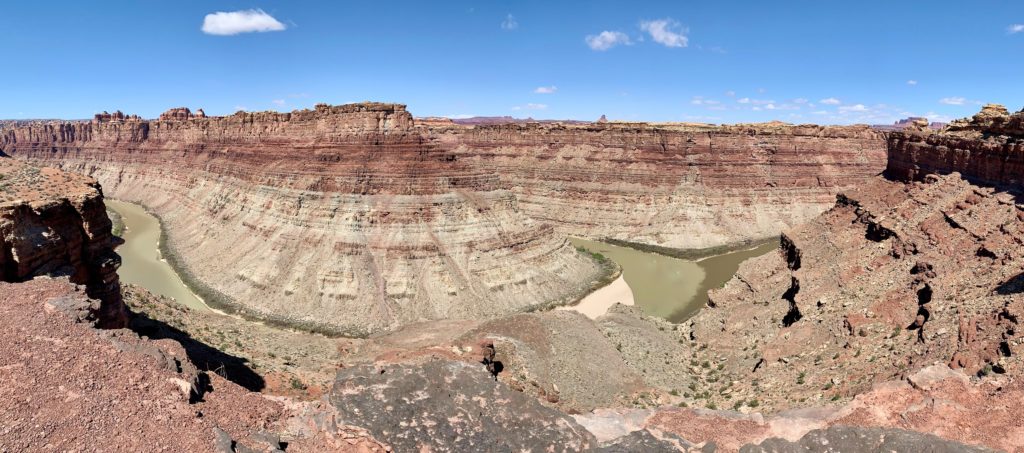
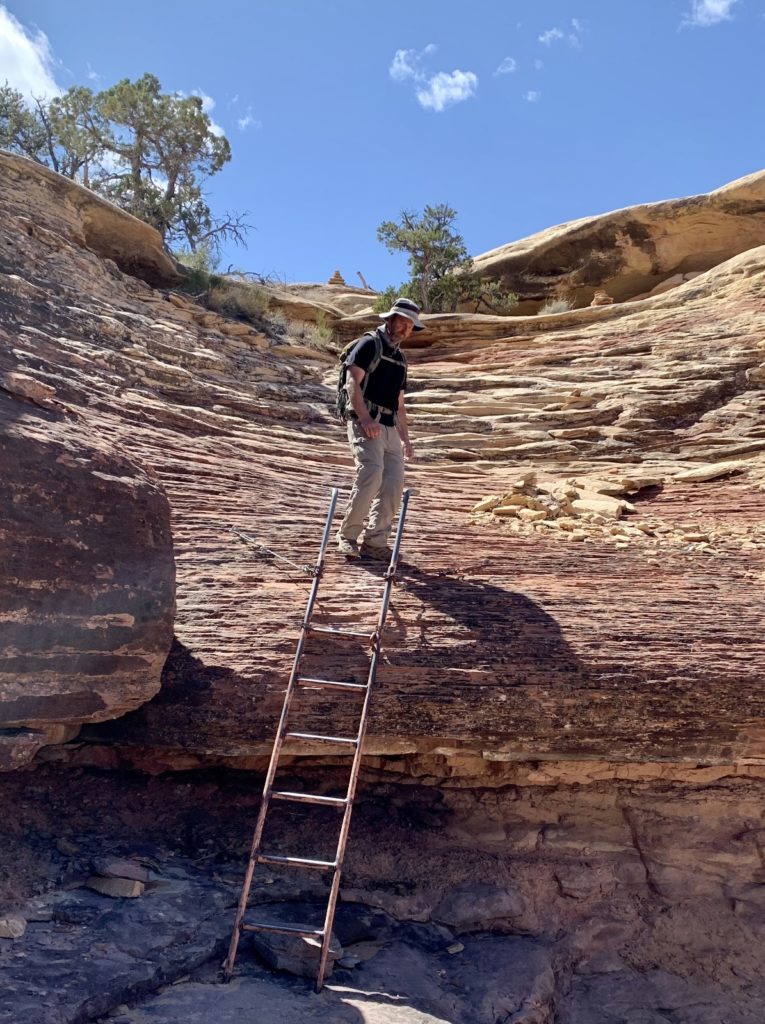
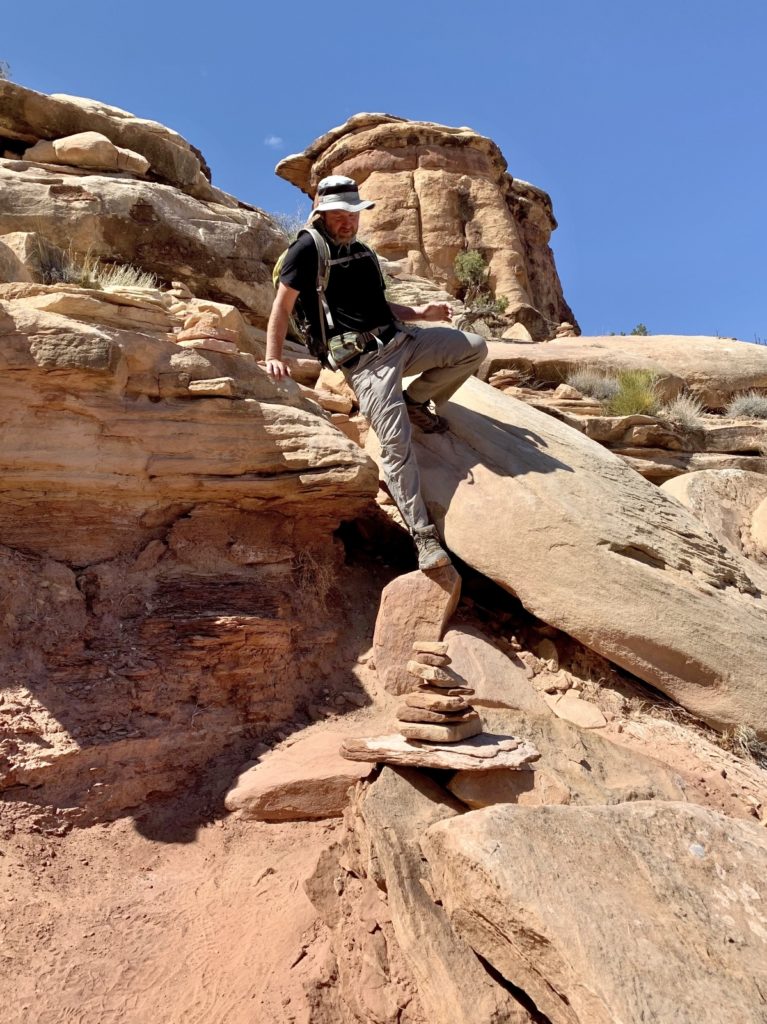
Discovering Ancient Sites
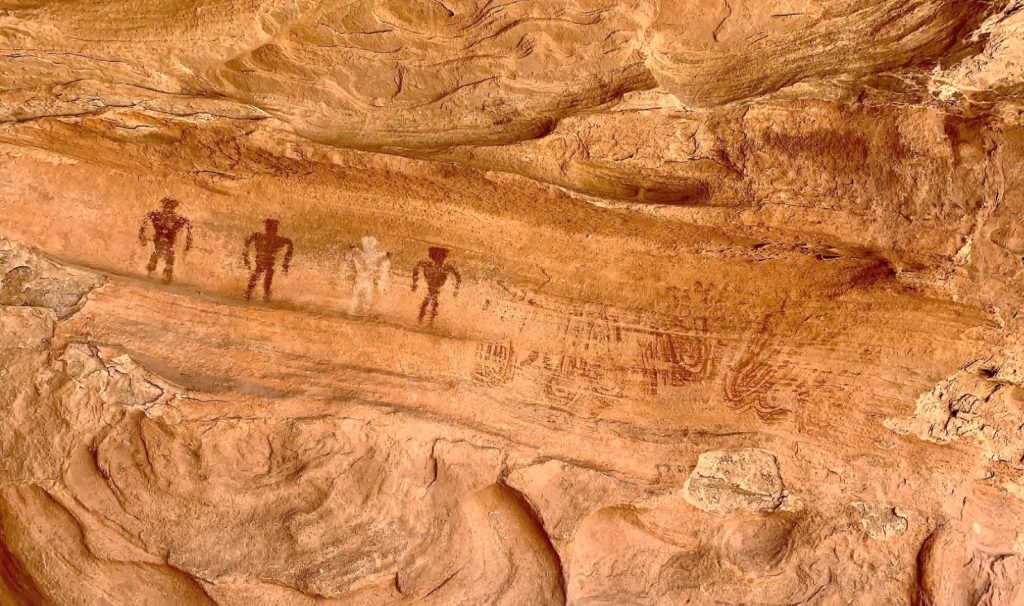
While exploring around the Needles, we discovered some nice granaries and pictograph panels. In all of my area research over the years, I have seen just one reference to the granaries and none for the pictograph panels. Because they appear to be relatively unknown, I will not disclose their location. If you find sites like these, please be respectful. Do not attempt to enter the ancient structures or walk on their walls. Please do not touch the pictograph panels as oils in your skill will cause the pigments to deteriorate more quickly. If we all do our part, these ancient sites will remain for future generations to appreciate.
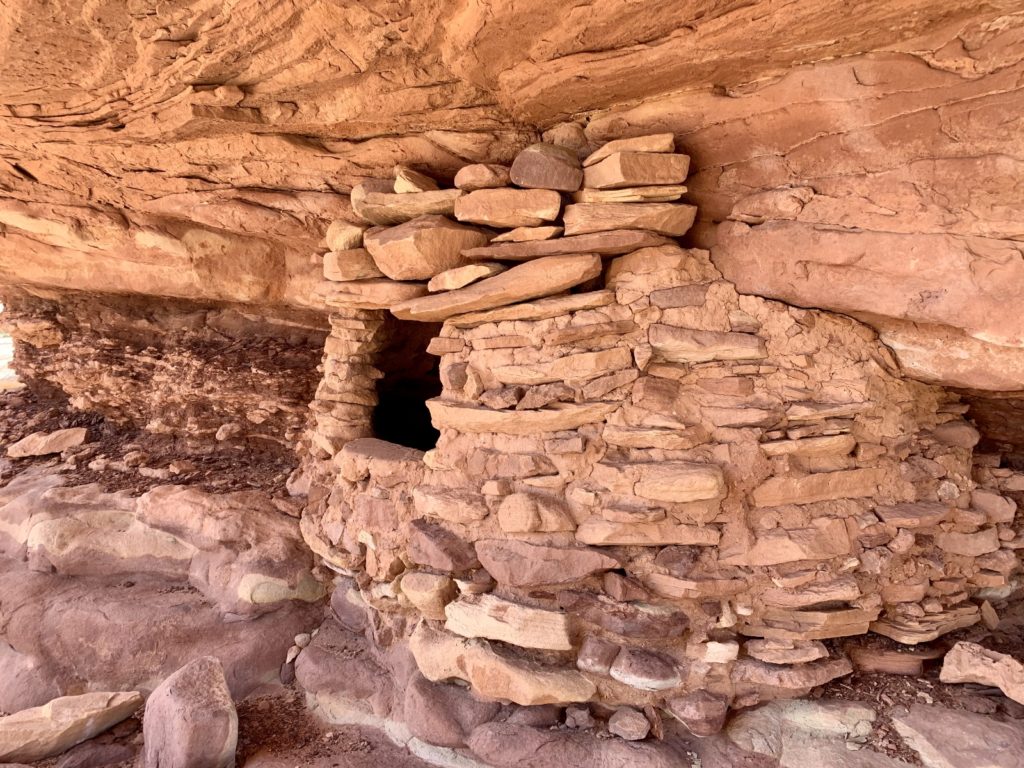
While at one of the sites, we met up with one of the park’s backcountry rangers. He was the second ranger we had seen while on trail in the Needles District. These fit individuals hike and backpack the trails and are wonderful ambassadors for the park. While the ranger was very friendly and helpful, it was clear that he took a special interest in us because of where he found us. He didn’t say anything negative about us being there—quite the contrary. We discussed what a special site it was and how special the entire park is for cultural resources. But it went without saying that the rangers keep an extra close eye on these special locations and help to protect them and educate visitors who may not know proper cultural site etiquette. I very much appreciate the job they do and it is always a pleasure to meet them. Later in the day, he went running past us. We could hear dispatch providing information over his radio. A ranger’s job is never done. Someone miles away was in need of help. Thank you to all the backcountry rangers who serve to protect these special places and who are always there to help hikers in distress.
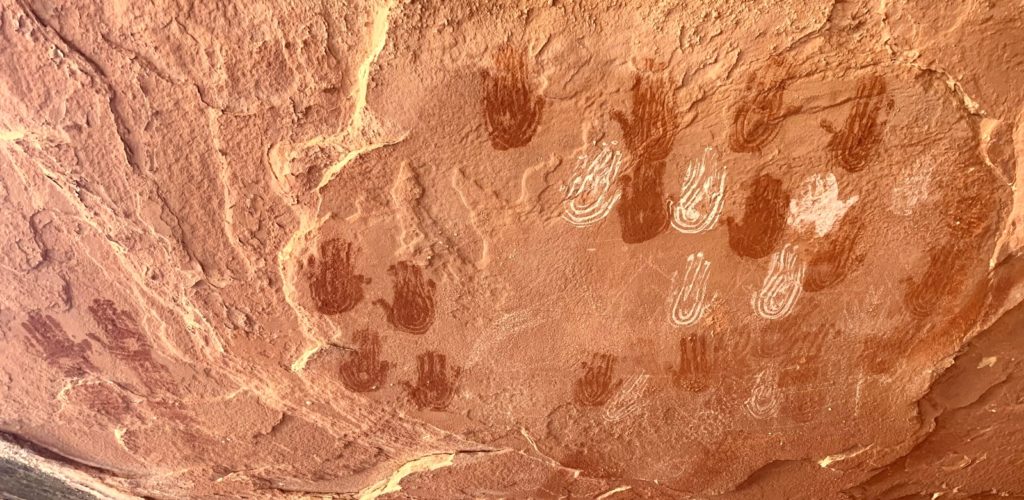
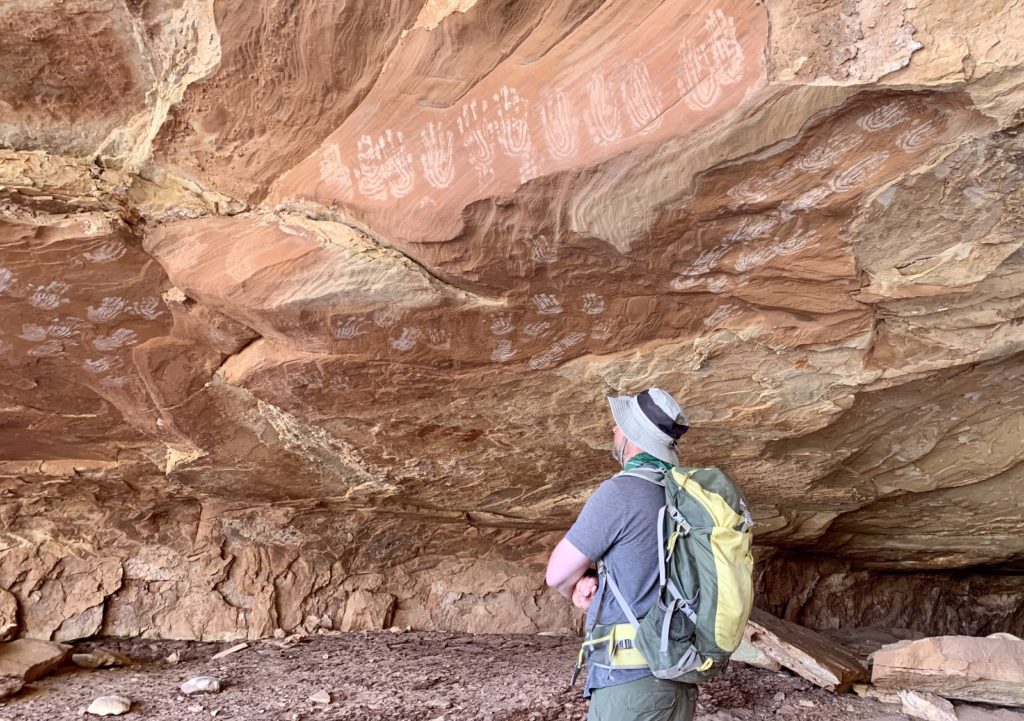
Peekaboo Trail
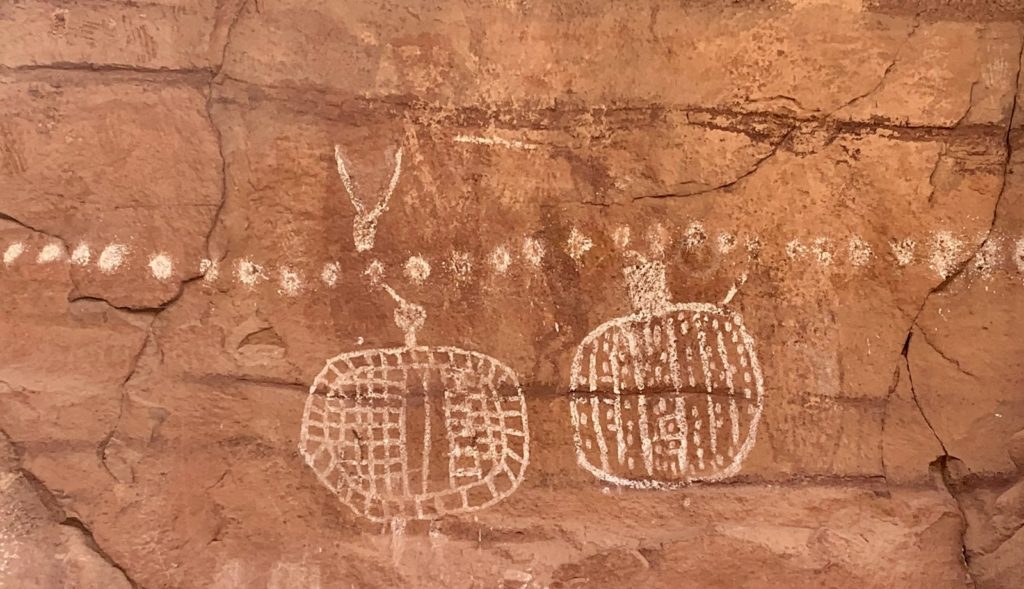
Back in 2015, we spent 4 days backpacking Salt Creek in the Needles District. Our final stretch of trail brought us to Peekaboo Camp from the south and then back to our shuttle vehicle at Cave Spring Trailhead. Since then, I’ve wanted to hike to Peekaboo starting at the Squaw Flat Trailhead in the campground. I knew the trail was highly scenic and Peekaboo is a fun destination with its unique pictographs and arch.
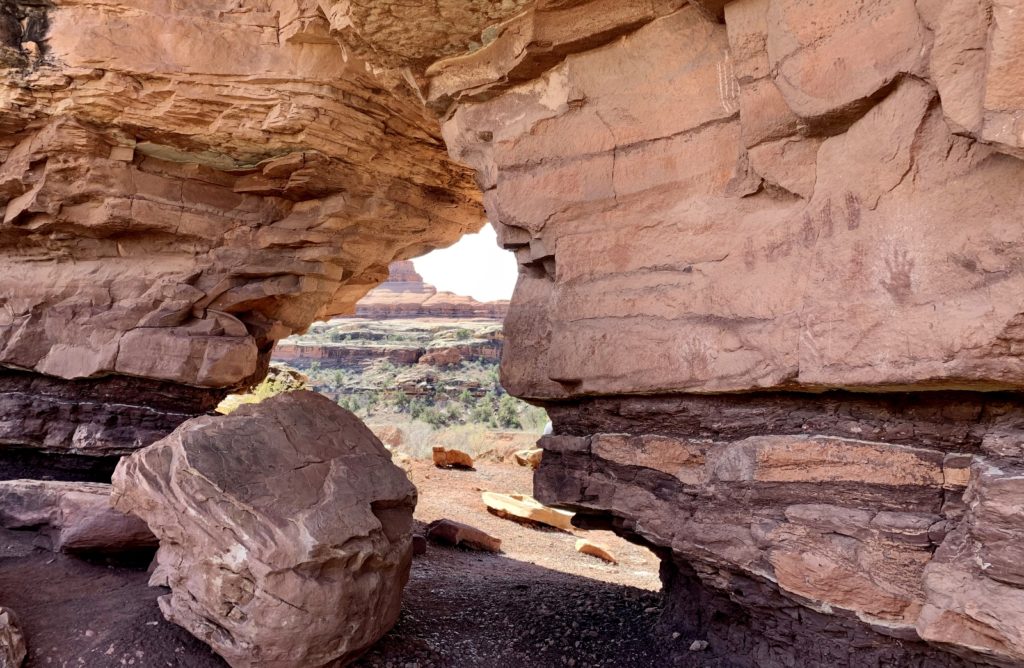
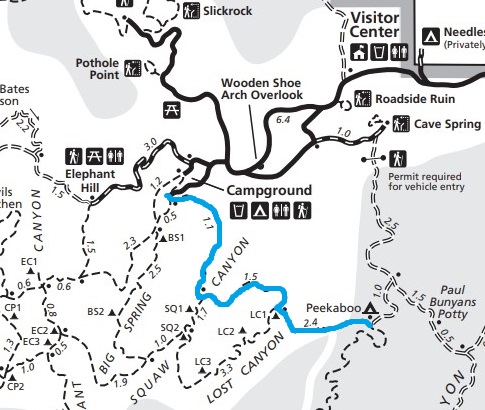
The 10.0 mi round trip trail to Peekaboo is a strenuous route. The trail crosses Squaw and Lost canyons on its way to Peekaboo Camp in Salt Creek Canyon. The route is characterized by high slickrock benches with spectacular views, steep slopes with some exposure along cliff edges, and two ladders to negotiate. While traction on the slickrock is very good provided you have proper shoes and the trail is dry, I don’t recommend this route for acrophobes or those uncomfortable on ladders.
We had hiked the first 2.6 miles of trail earlier on our Lost Canyon hike, so we made quick work of the steep climbs in and out of Squaw and Lost canyons as well as one short ladder.
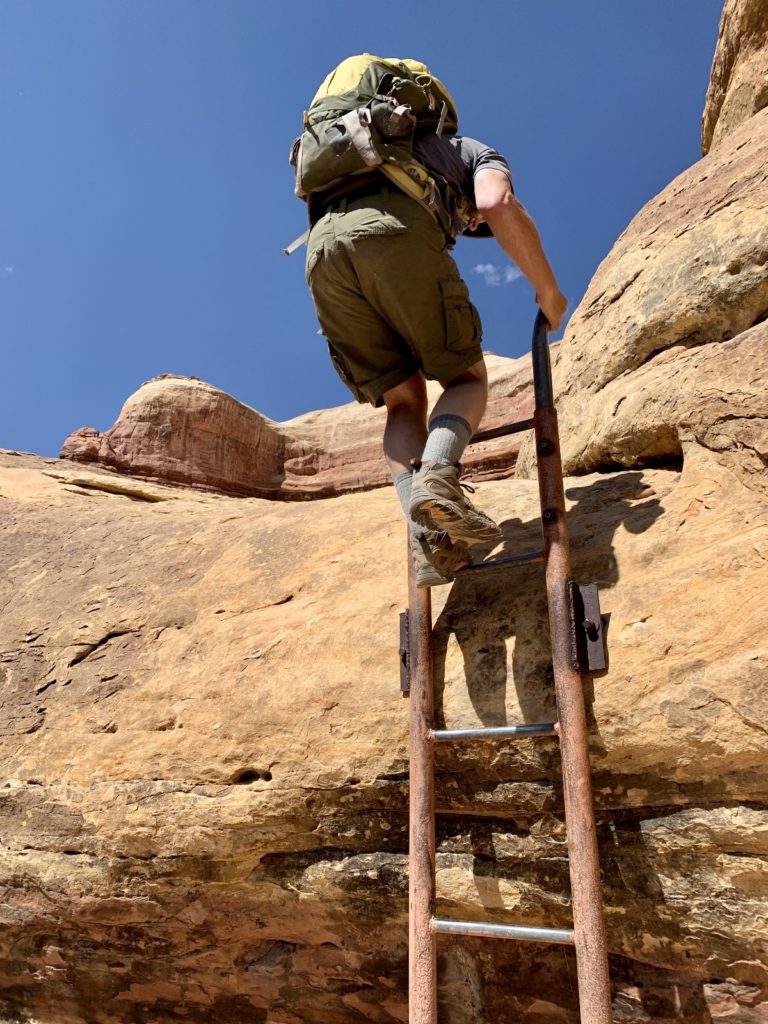
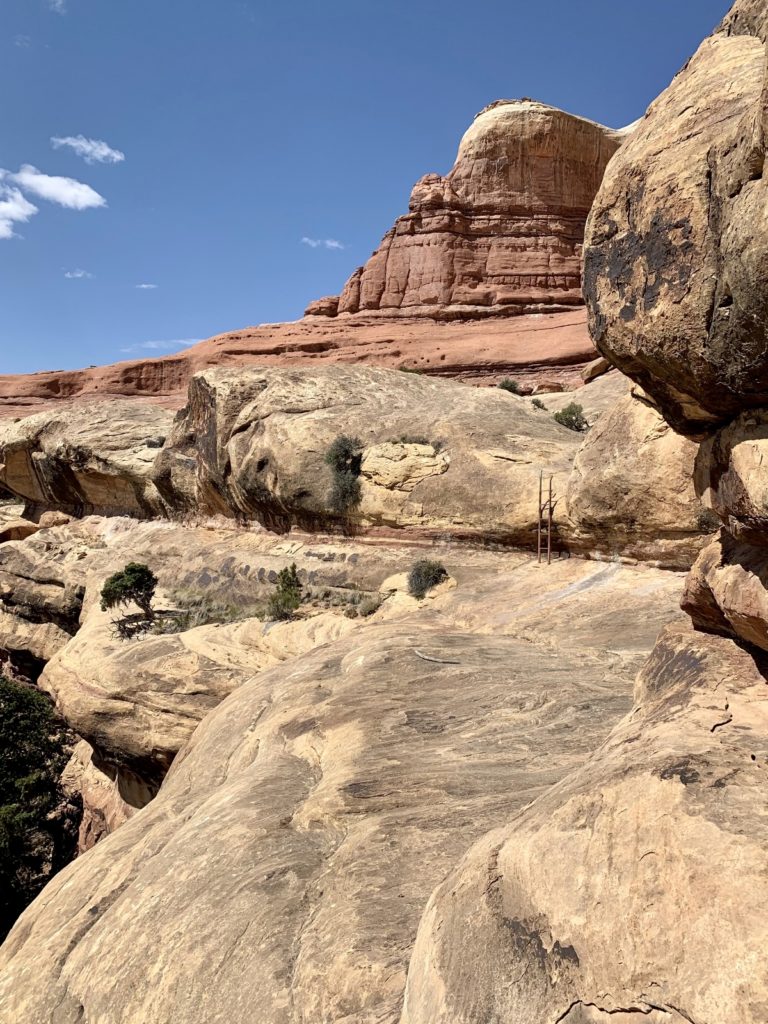
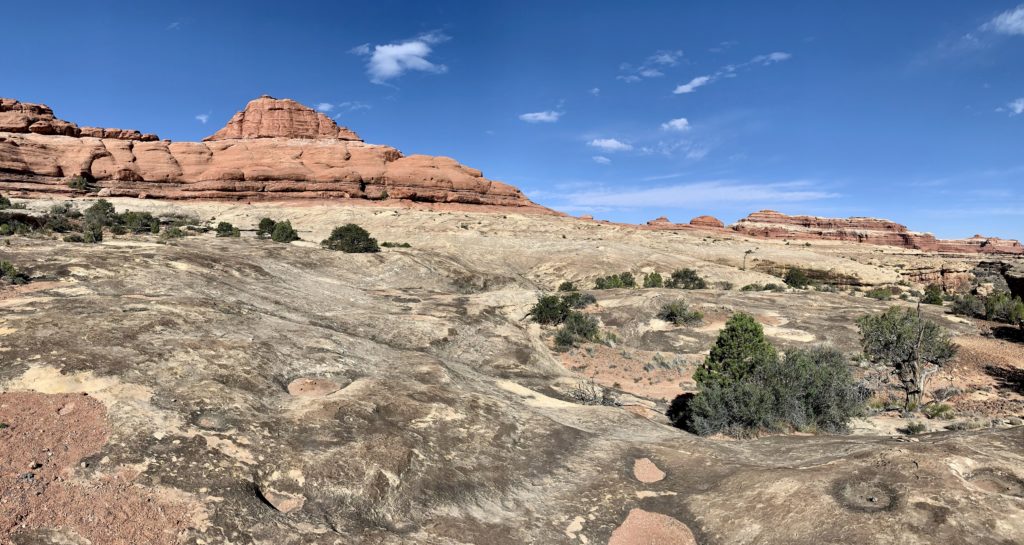
Past Lost Canyon and on new trail, things really got interesting. We had more climbs as we crossed ridge after ridge and traversed along slickrock benches above deep canyons. Colorful sandstone cliffs and spires were our constant companion and we even caught occasional glimpses of the snow covered La Sal Mountains in the distance. Navigation was almost entirely via well-placed cairns. You must always have your next cairn in sight as you hike this trail!
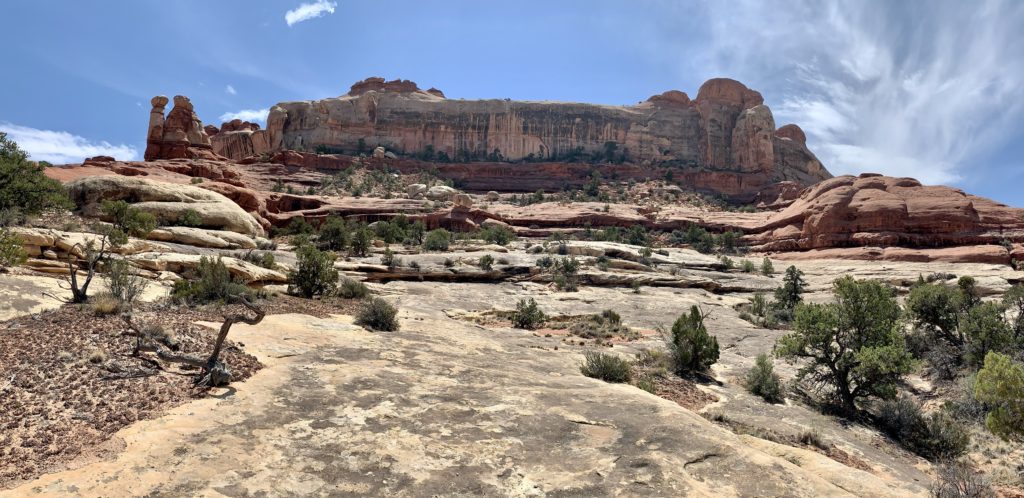
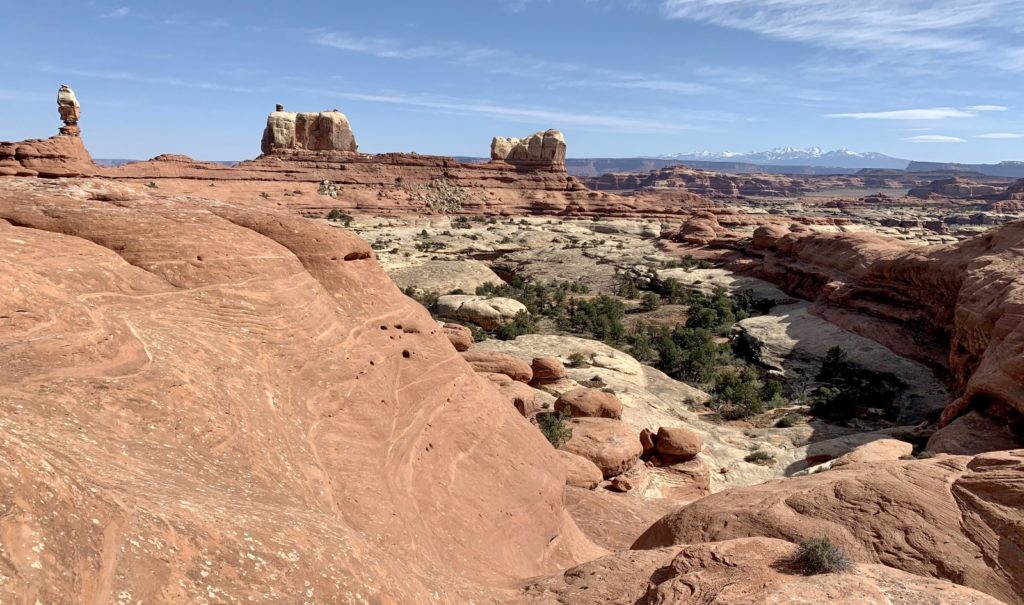
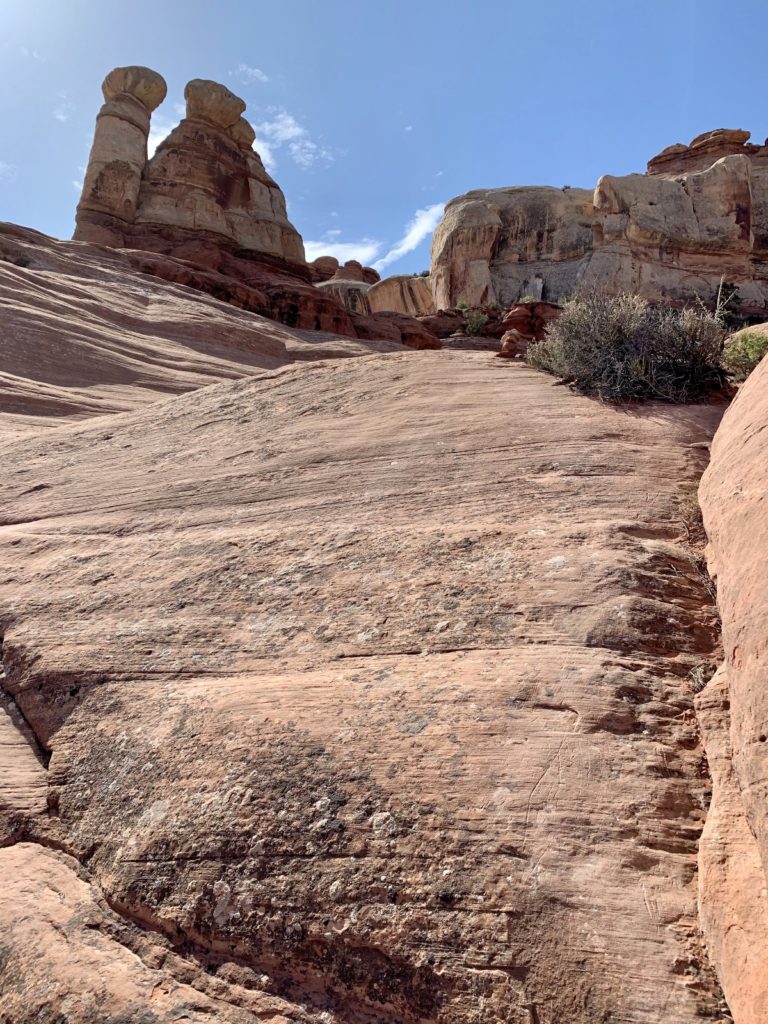
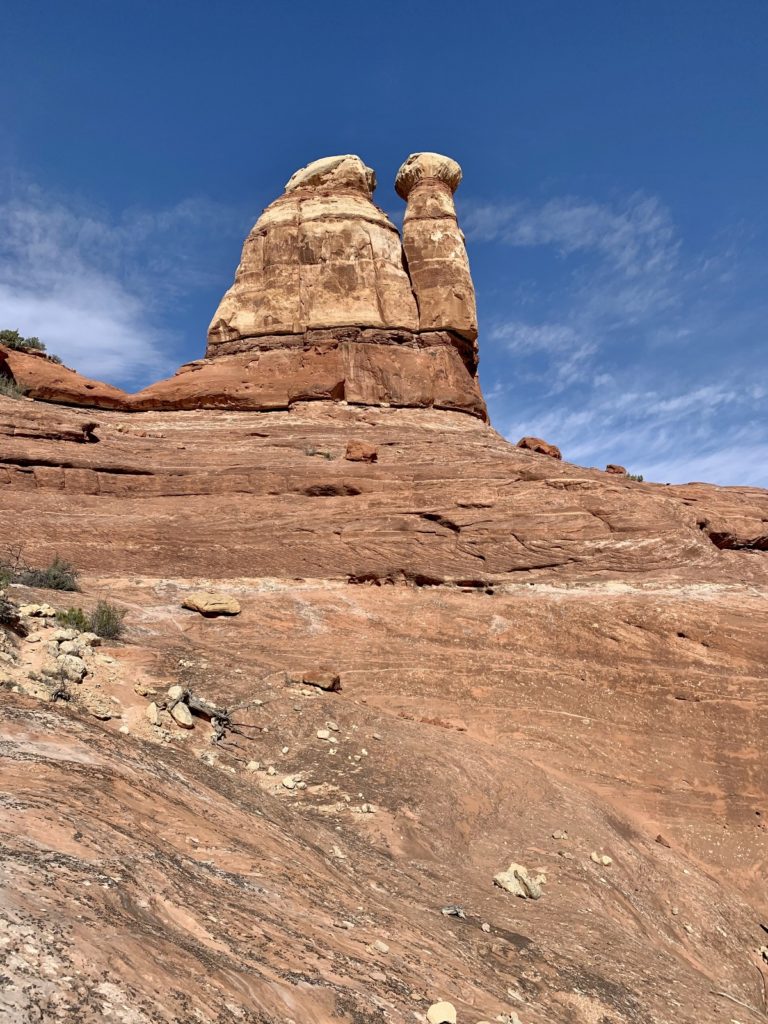
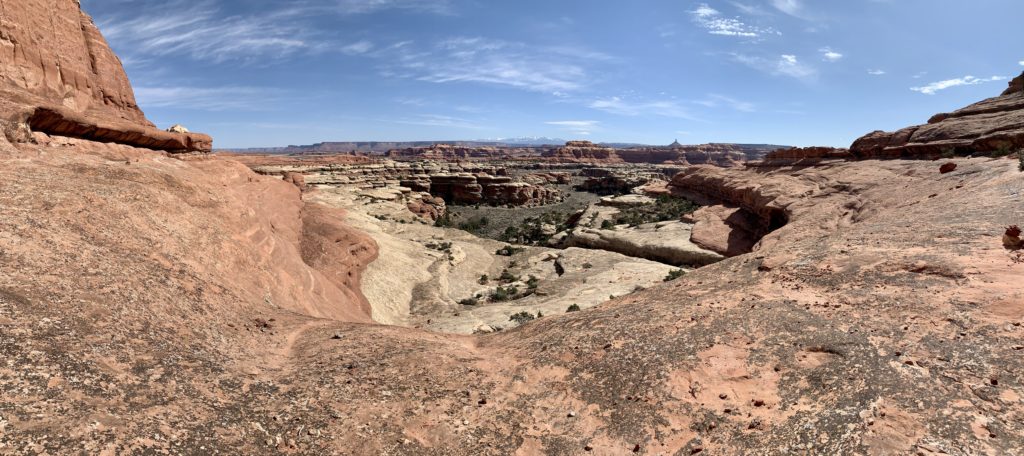
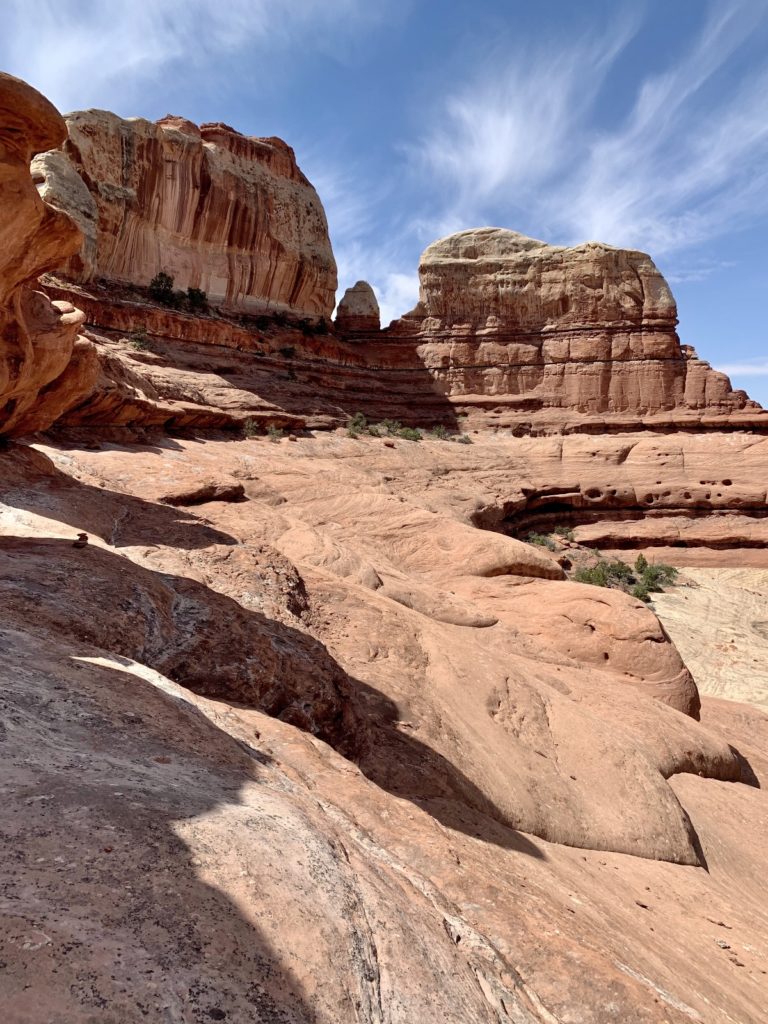
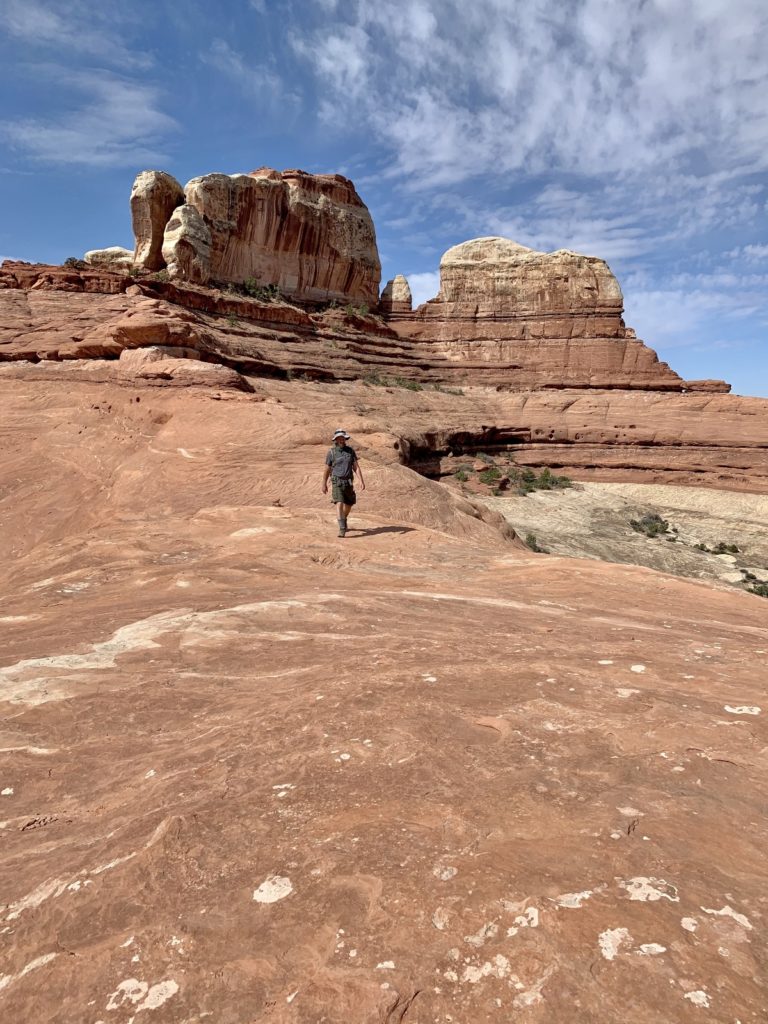
One particularly fun section of trail passes through a window in the cliff before circling around the next canyon.
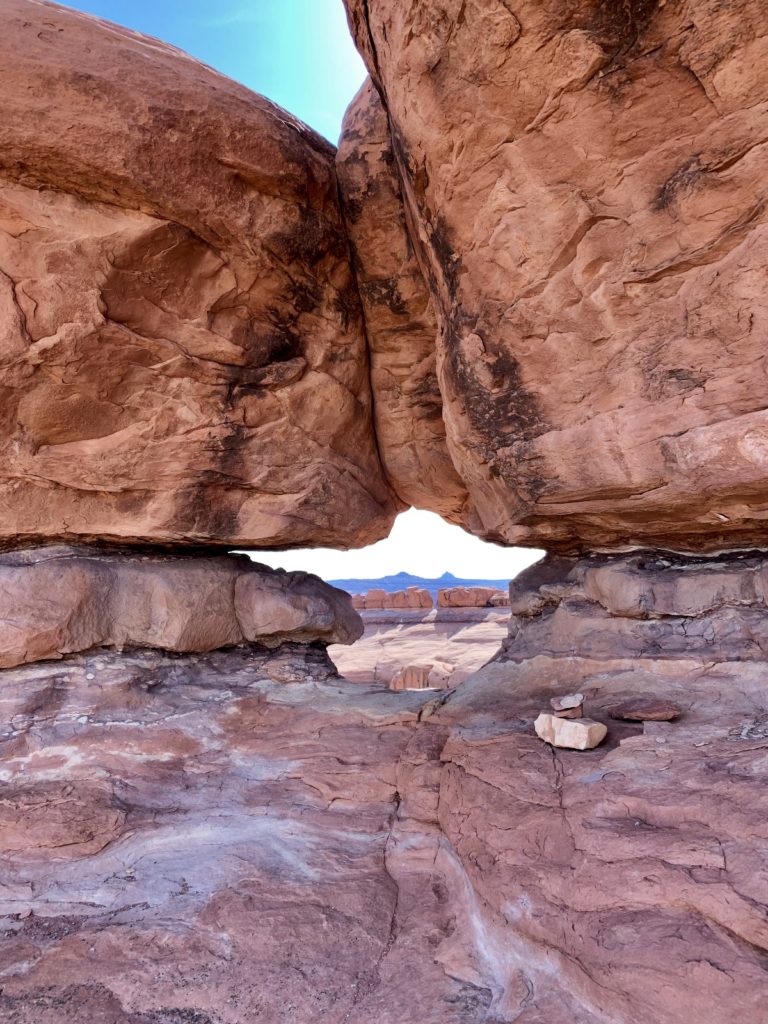
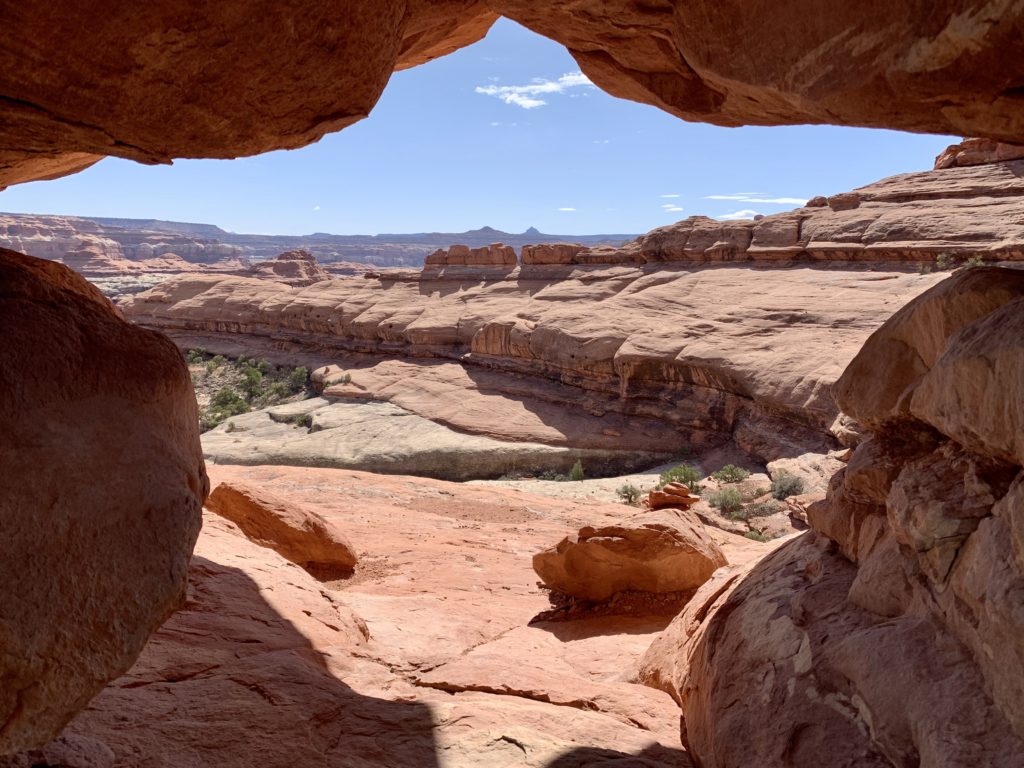
Past the window, the trail begins a long descent across slickrock benches down into Salt Creek Canyon. At times, you can’t imagine that the trail can continue its descent over the terrain ahead, but it does. Just keep following cairn to cairn. Eventually you come to a long ladder that descends through a joint in the cliff to the canyon below. I had heard that some people have problems with this ladder and I sure hoped we hadn’t hiked all that way only to get skunked in the final stretch. Getting started down a ladder is usually my most tricky part, but I managed this one just fine. The ladder does rest against a massive boulder which makes it a bit difficult to put your feet securely on the next rung. Reaching the bottom, it is a tight turn around followed by a few giant steps down off some large boulders. This section can be especially challenging for backpackers with a full pack. We negotiated the joint just fine and the impressive ladder descent just added to the fun of our adventure.
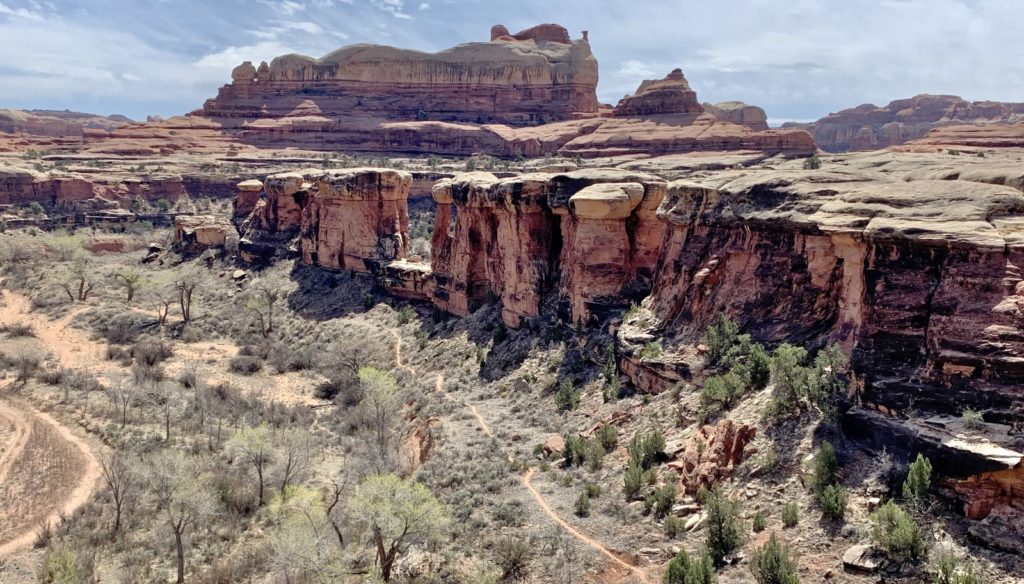
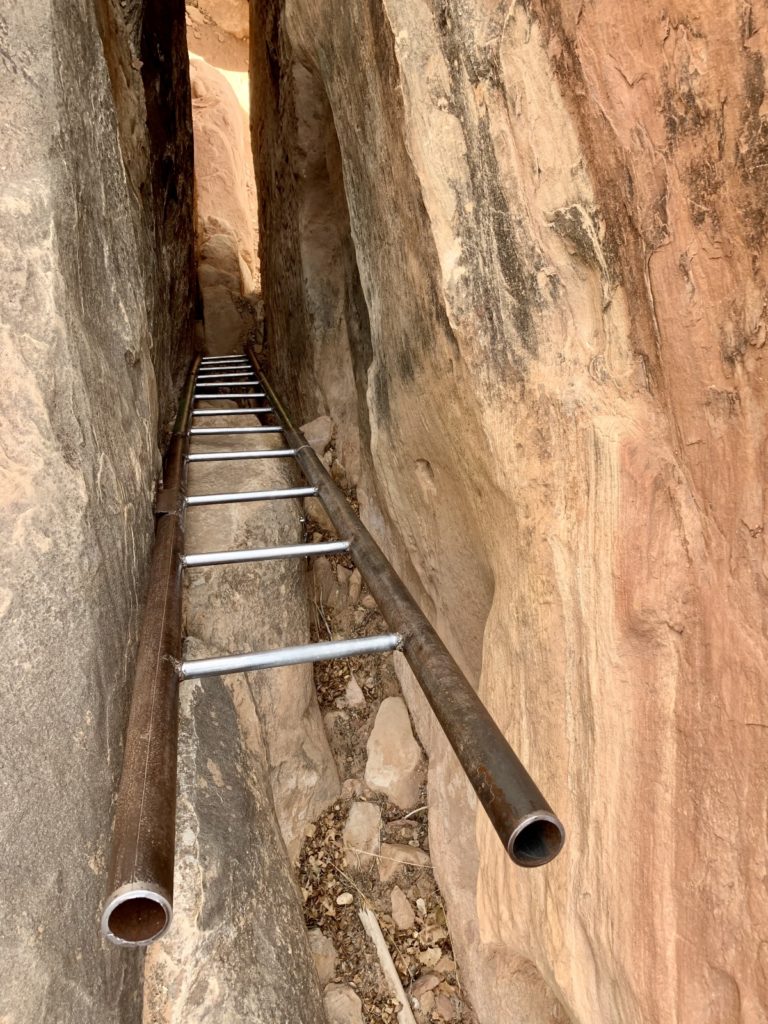
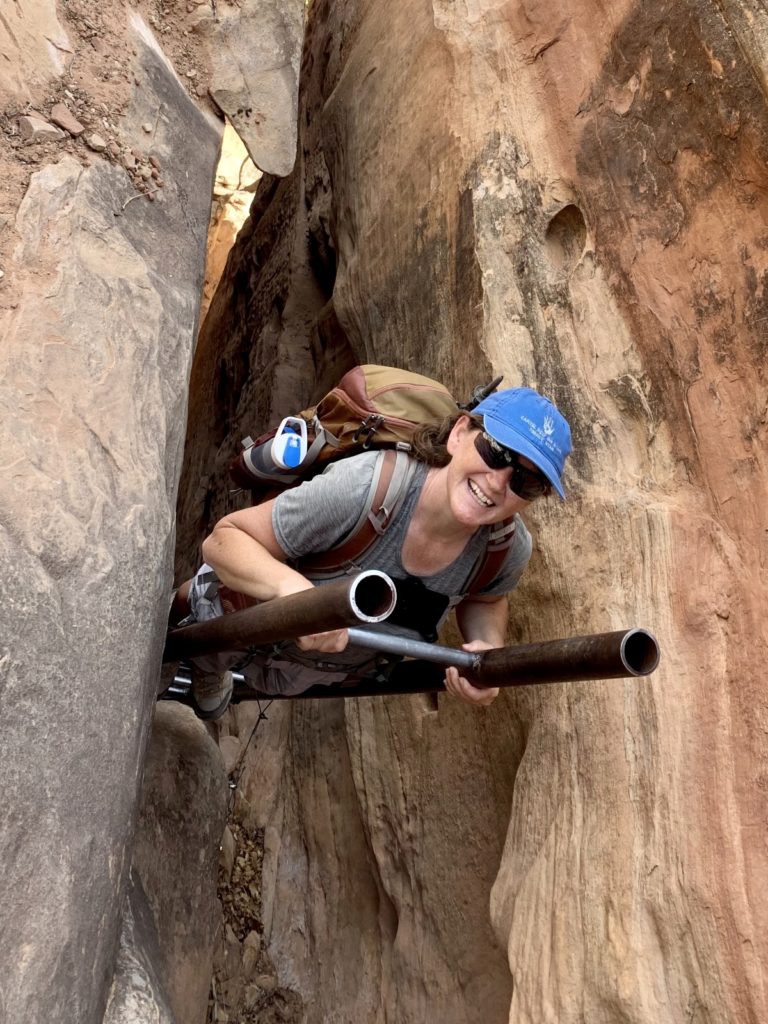
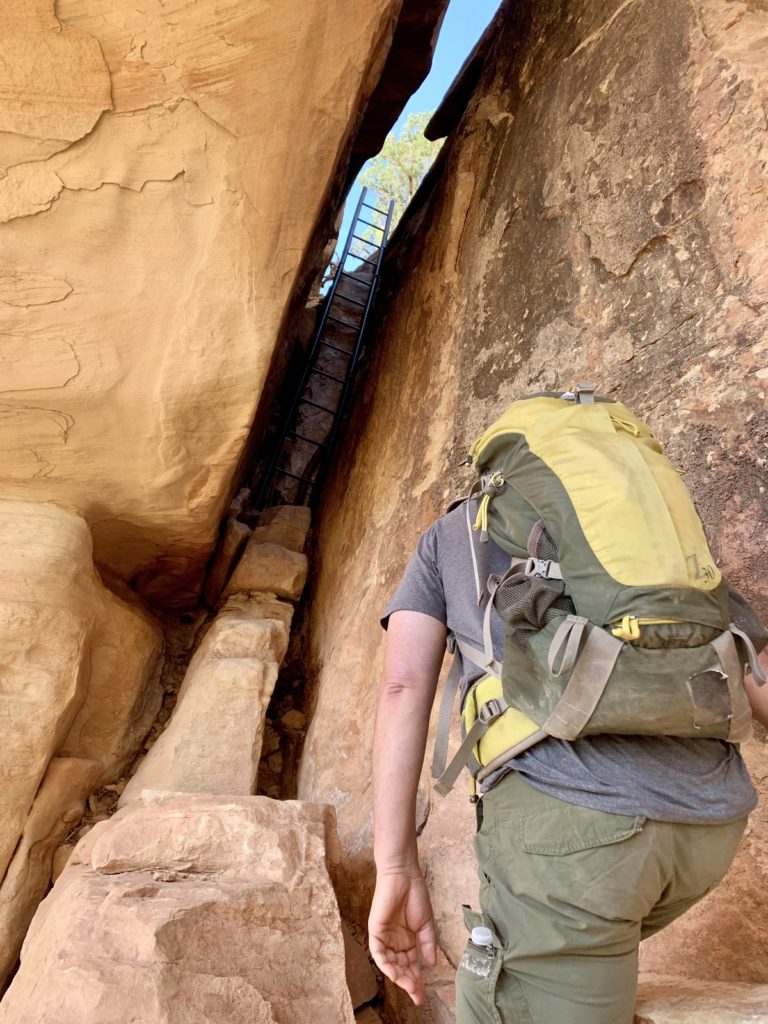
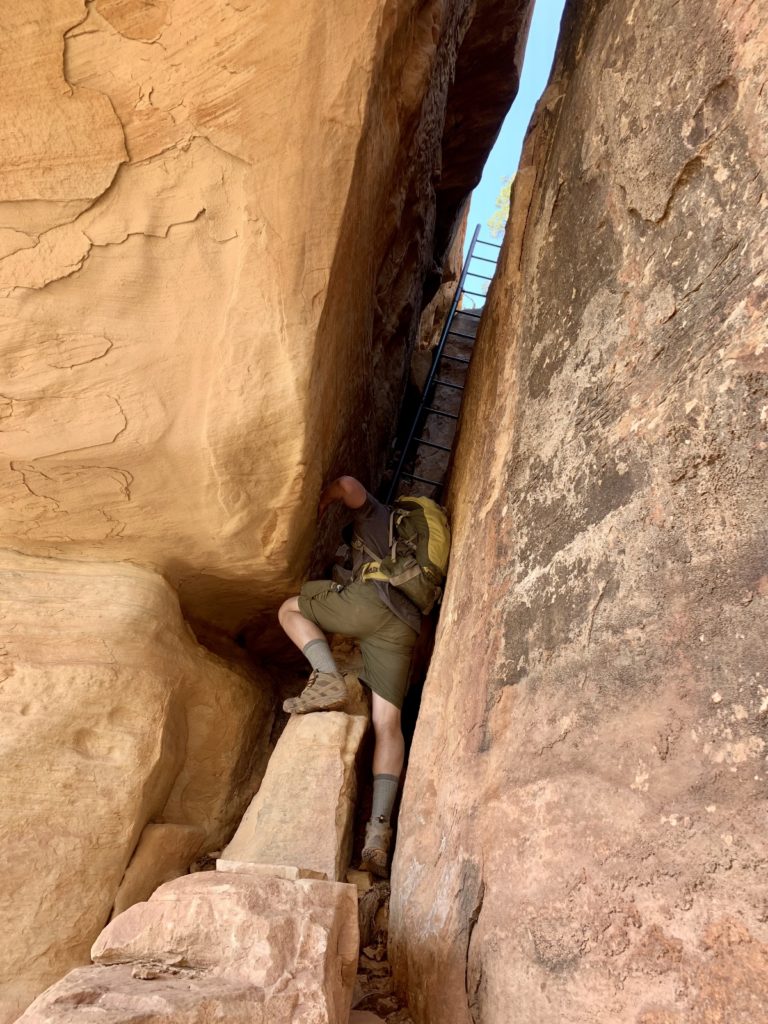
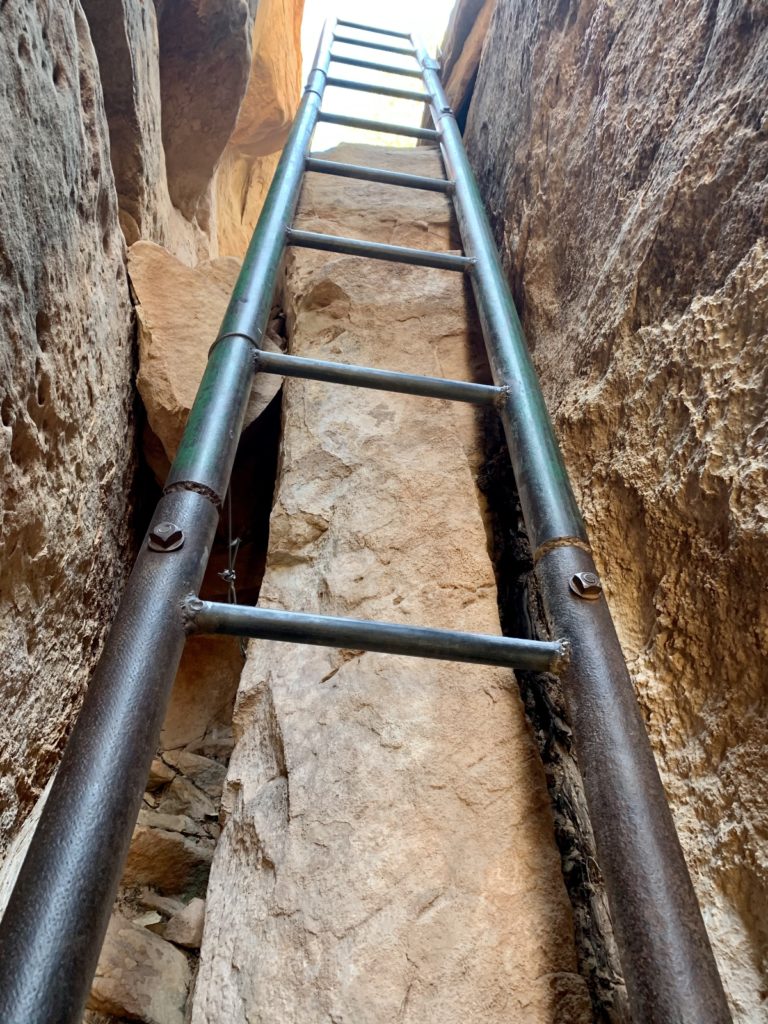
Emerging from the joint, we found ourselves in Salt Creek Canyon. The trail followed some cliffs a short distance before reaching Trail Arch and several pictograph panels. The main pictograph images are two large white shields, but if you look closely you will also see faint dark red Barrier Canyon images that date to at least 1,000 BC. There are also numerous painted hands on both sides of the arch opening. Trail Arch is a rather small arch, but it is quite scenic at the base of some massive towers. The trail passes through the arch and continues up Salt Creek Canyon. We did some extra exploring in this area which resulted in our hiking a total of 12.0 miles roundtrip.
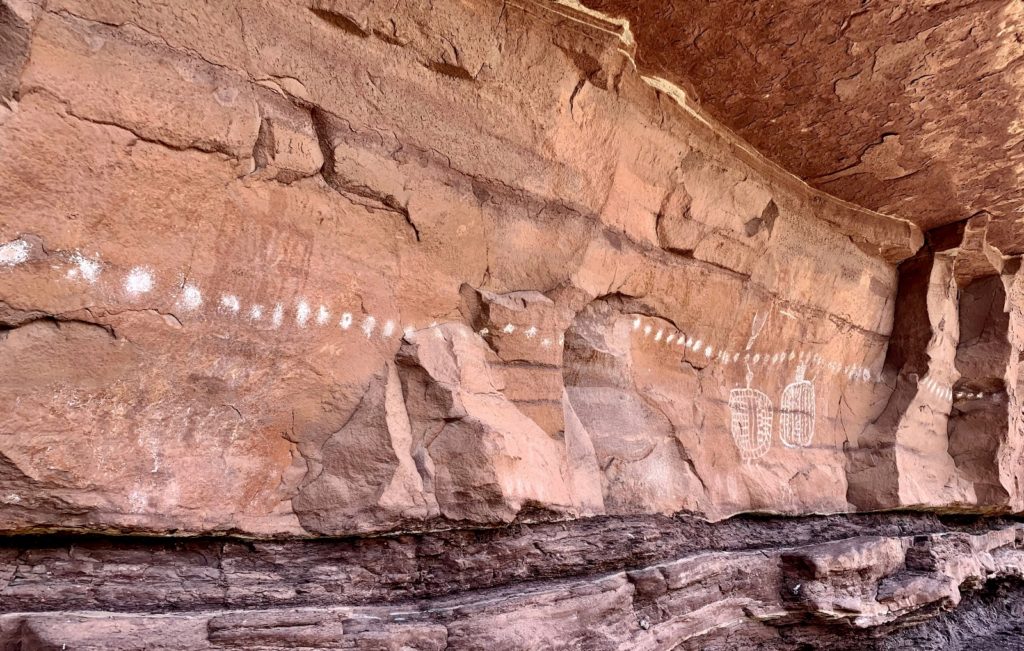
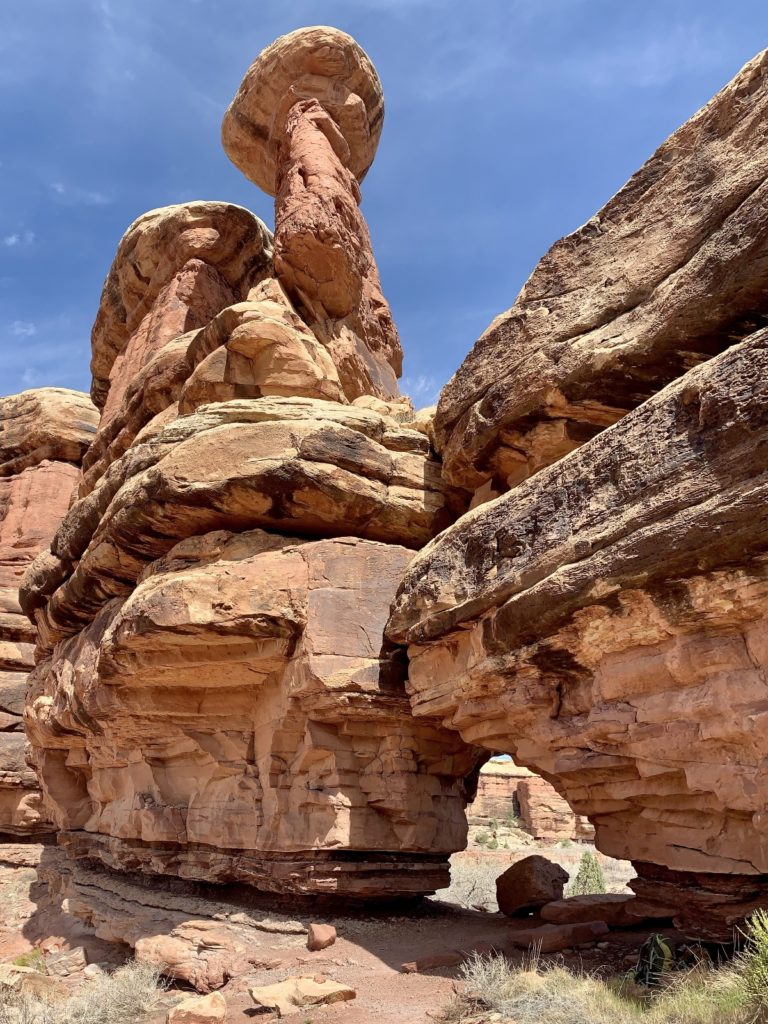
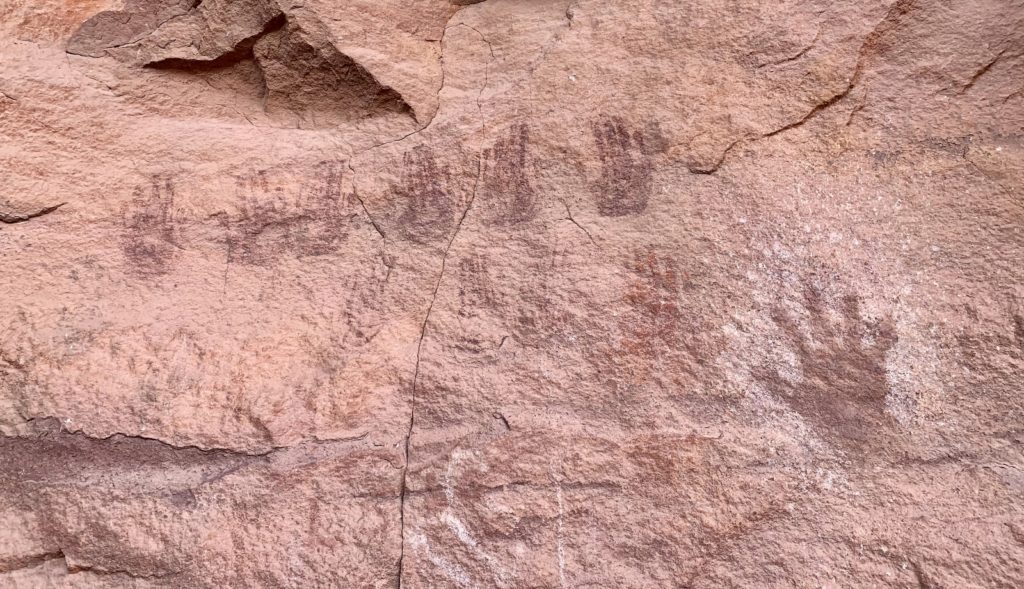
Tips: this is a highly rewarding, but challenging hike. It is a relatively quiet hike, no doubt thanks to its difficulty. Prepare for a full day on the trail with proper footwear (we highly recommend Vibram sole boots for the steep slickrock) and be sure to take plenty of snacks and water. I recommend getting an early start to take advantage of cooler temperatures and to increase your odds of finding a parking spot at the popular Squaw Flat Trailhead. While the Needles District of Canyonlands National Park does an excellent job of signing all trail junctions, I highly recommend carrying a printed copy of the park’s trail map.
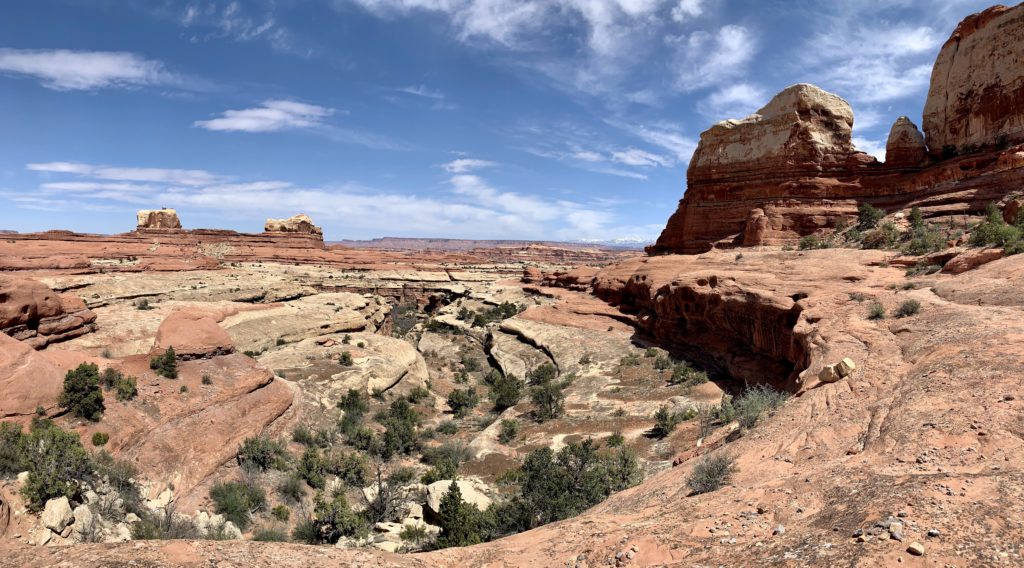
Exploring Around Camp
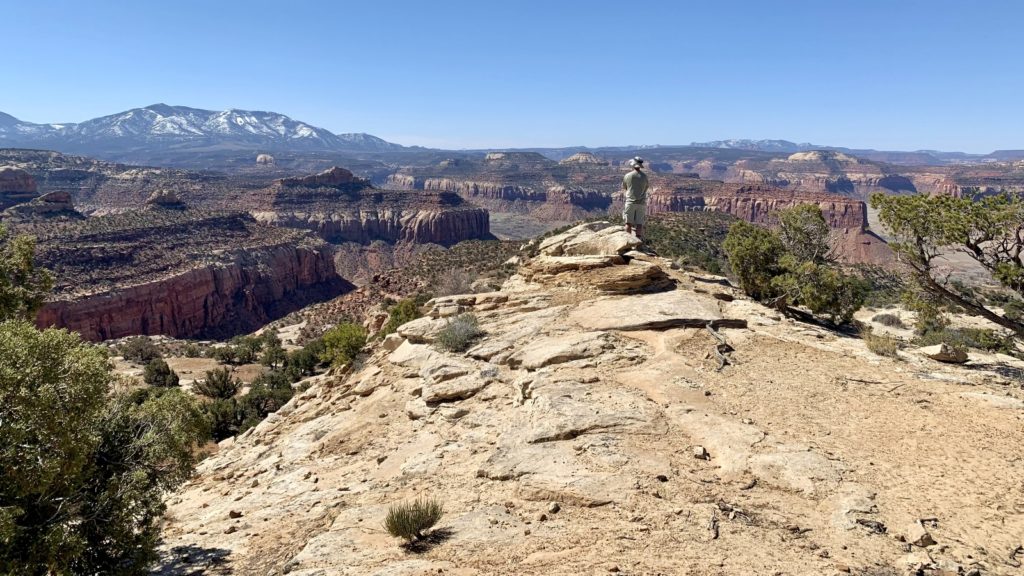
In between our Needles District hikes, we spent some time exploring the area around our camp site outside the park. We enjoyed the solitude and found some pretty amazing viewpoints.
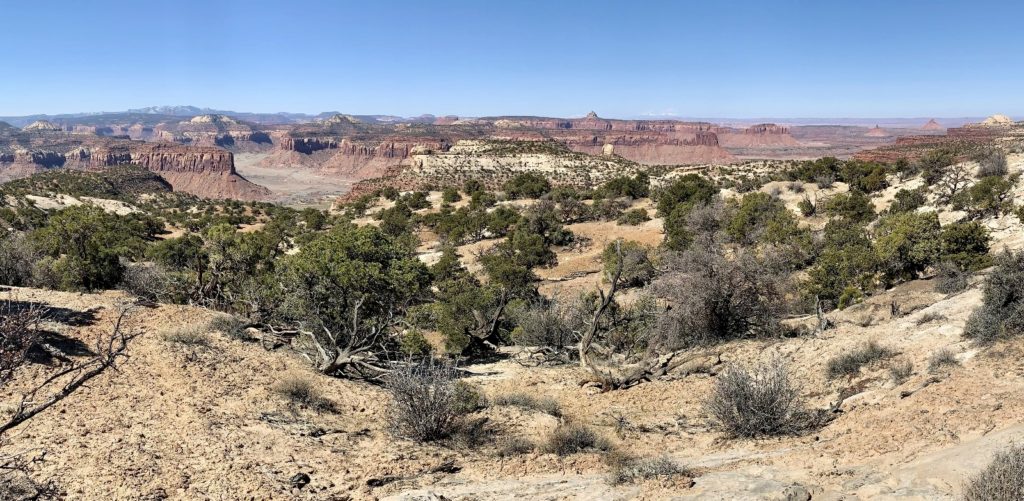
As always, we had a fantastic time exploring Canyonlands Needles District. I really can’t emphasis enough how phenomenal the hiking is and how relatively quiet the trails are (outside the Chesler Park – Joint Trail Loop). But all good things must come to an end. After 9 days in the area, it was time to move on to a new location and some new adventures!
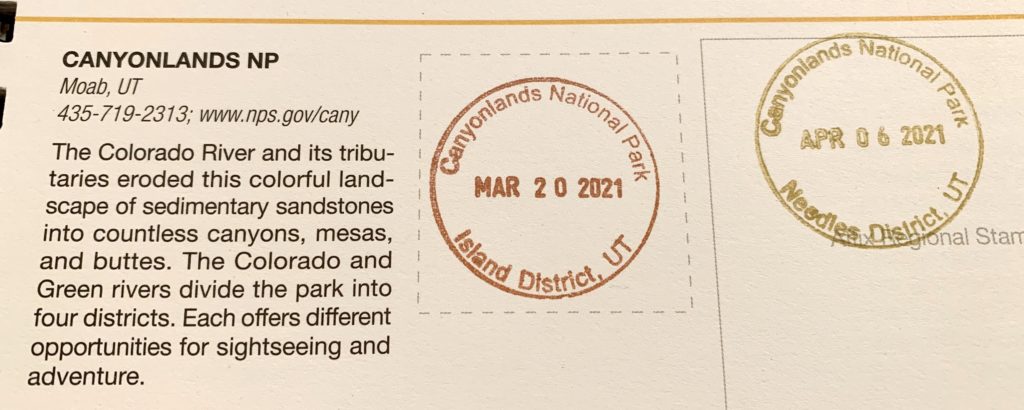
Related Posts
- 2021 Spring Adventures: Back on the Road!
- 2021 Spring Adventures: We Arrive in Moab
- 2021 Spring Adventures: Moab Area Explorations Continued
- 2021 Spring Adventures: Moving on to Canyonlands National Park Needles District
- 2021 Spring Adventures: Hovenweep, Bears Ears, & Natural Bridges National Monuments
- 2021 Spring Adventures: Canyons of the San Rafael Reef
- 2021 Spring Adventures: That’s a Wrap!
- Canyonlands National Park Needles District
- Utah’s Canyonlands National Park: Salt Creek Backpack
The Adventure Continues
Join us for our next post as we explore Hovenweep and Bears Ears national monuments. And don’t forget to check out our Amazon RV and Adventure Gear recommendations. We only post products that we use and that meet the Evans Outdoor Adventures seal of approval. By accessing Amazon through our links and making any purchase, you get Amazon’s every day low pricing and they share a little with us. This helps us maintain this website and is much appreciated!
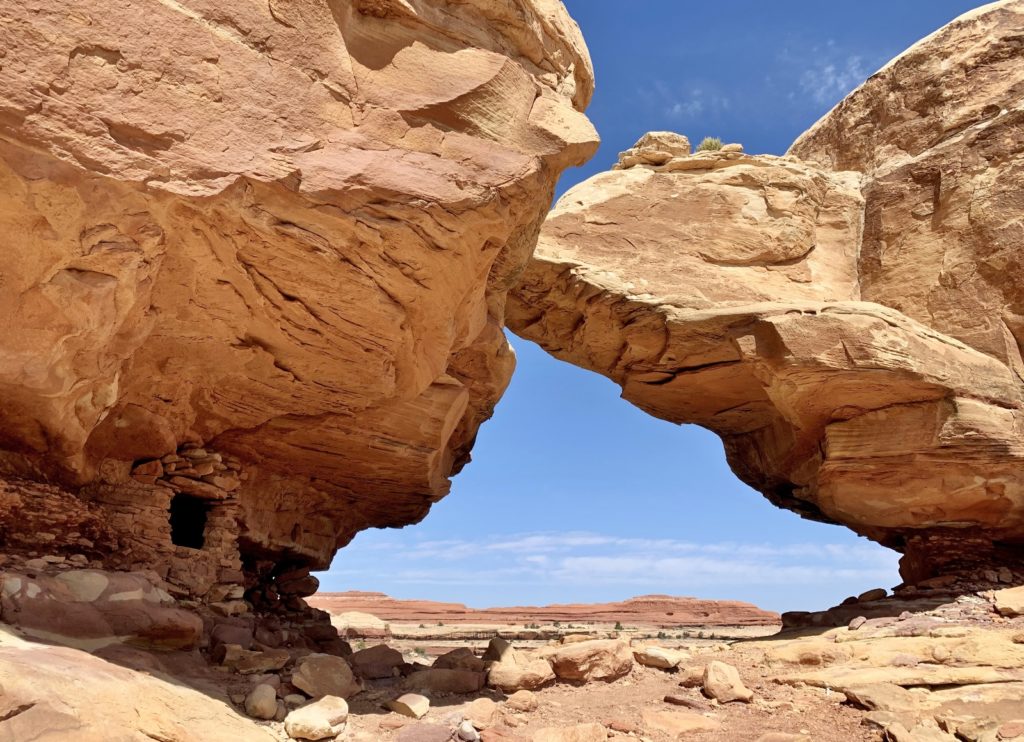
So INTERESTING! I especially liked all the hand prints. Beautiful scenery!
The hand prints are always my favorite too 🙂 A tangible link to those who lived there 700+ years ago!
nice to see folks engaged in rigorous off the beaten path hiking. a welcome change from the typical “well we finally made it to delicate arch. what a strenuous hike.”
Thank you Dennis. Needles trails certainly provide one with a feeling of accomplishment!
Happy Trails,
Lusha